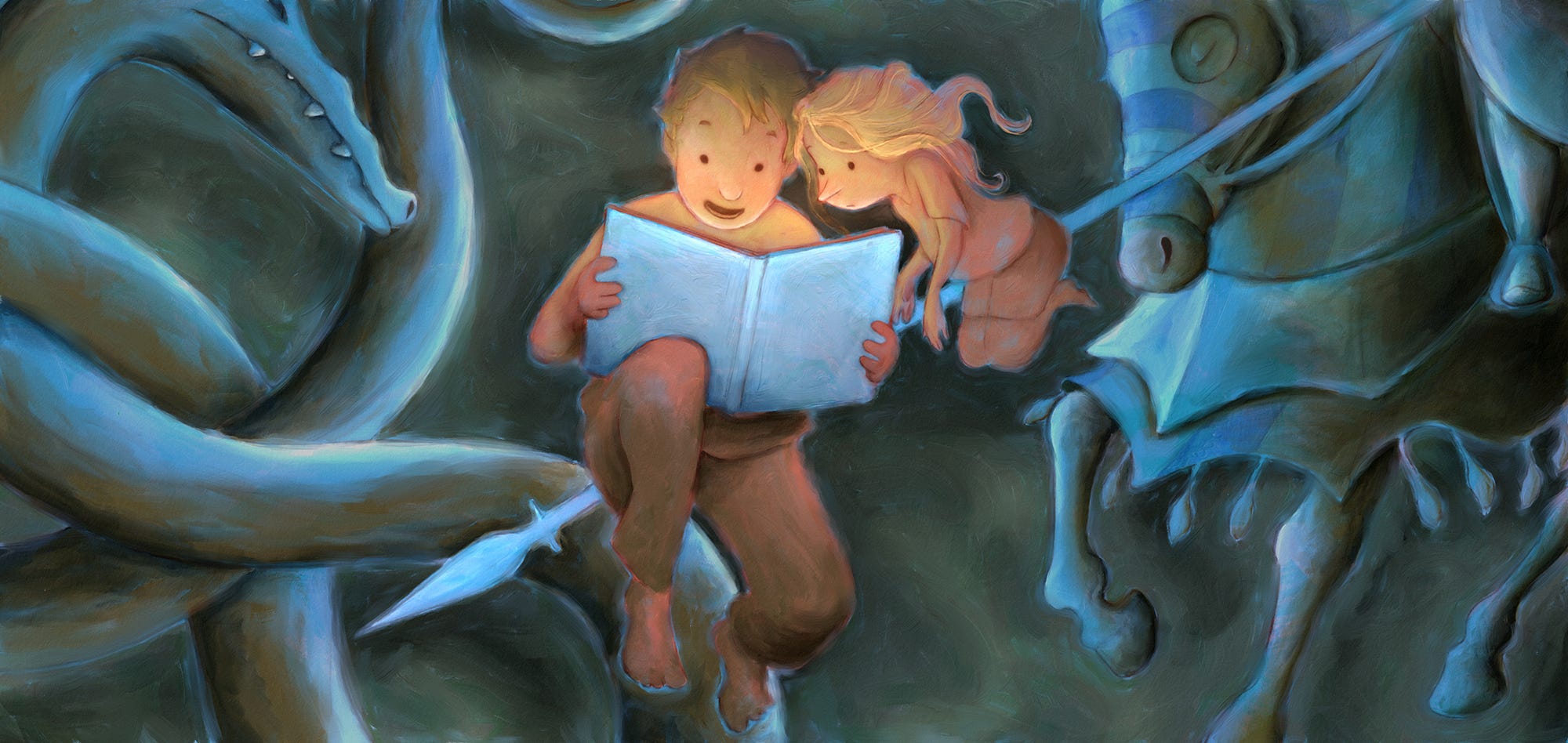Reading Books With Children
Art, Participation & the Whole Endeavour
I don’t think I really understood the importance of children's books until I started reading them out loud to children. What I realised is that the words and the pictures are only two points of a triad. The third point is the ritual of reading; how the experience is delivered and received between a voice and a pair of percipient and eager ears. So much can happen in those moments that an author, illustrator or publisher can’t touch. It’s those moments when the whole endeavour comes together.
A book built to be read out loud has both a permanence and transience about it. It lives on a shelf as an object. It is not a screen conjuring many things; it is one, unchanging thing. Each reading is the same and each reading is entirely different. A different mood, parent, energy or spot to sit. A young child might read or peruse the pictures by themselves, but more often another is invited into the experience. It’s something to be shared. It has the peace of a painting, the sequentiality of cinema, the impermanence of a play and the reciprocity of religious communion. It’s a connection point between two or more persons participating in a story; both on the page and in the moment. I can’t think of another art form that does all this so well.
I recently watched a talk by artist and public speaker, Jonathan Pageau, on what he believes is missing in our contemporary experience of art. As an example of art at its best, he describes the observation already rattling in my head. He says:
You sit in bed, you open the book, and the parent reads the story to the child. They are engaging in a relationship. They are not just treating this as a moment of performer and public… It is a true moment of affection and mutuality that is being experienced. It's a little liturgical experience to read a story to a child.
Pageau shares a vision for the renewal of Orthodox Christian art, but I think his ideas about art and culture are relevant to anyone interested in a more meaningful creative world. His observation on children’s books sits within his broader vision for art. He talks about our ingrained idea of art as rebellion, subversion and even revolution, and contrasts this with a classical, ancient idea of art understood mostly as a means of celebration; as participation in a memory of who we are. He champions art that doesn’t challenge or attack but remembers and reminds. He wants an art culture that abandons cynicism for elevation and enlightenment.
I love this thinking. What he’s talking about is the very thing that excites me about making books. It’s an opportunity to reach beyond entertainment and distraction and immerse ourselves in the delight of uniting humans through stories that remember and ratify family, purpose, goodness and home.
It’s an aspiration that enlivens me not only as an artist, but as a reader and a father too. “Dad, read me a story”, might be my favourite thing to hear. Ask me again, I think to myself. And she does. And I do.
It’s those moments when the whole endeavour comes together.





I love the idea that reading is a triangle effect as you say: "...the words and the pictures are only two points of a triad..."
Yes and yes!